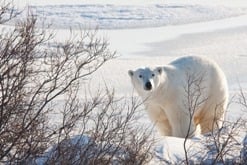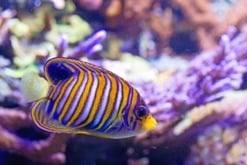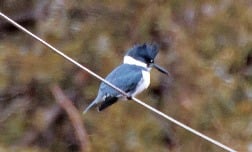Water and Energy Challenge
09th December 2014

Jenny Lundh, Environmental Regulations Planner talks to us about the recently launched 'Water and Energy Challenge' in partnership with Paignton Zoo Environmental Park.
During my day job, I spend most of my time liaising with the Environment Agency on behalf of my engineering colleagues. However, on Monday 10 November I was on my way to Clyst Vale Community College to deliver the first module of the 'Water and Energy Challenge'. I had done some teaching before joining South West Water and was looking forward to being in the classroom again.
The schools 'Water and Energy Challenge' was jointly set up by Paignton Zoo and South West Water, to involve local schools in energy conservation as well as water conservation and to demonstrate the benefits of these to wildlife - hence tackling subjects close to the heart of both organisations.
The group of students I met were the school's science club who meet once a week after school. These nine students aged 11 to 12 turned out to be a keen and inquisitive group.
We first looked at biodiversity - the biological diversity of life. Sitting in groups they listed reasons for conserving biodiversity and came up with some great ideas; ranging from usefulness to us (food, medicines, oxygen, textiles), through usefulness in nature (food chains, pollination, shelter) to more aesthetic reasons like beauty, interest and "it would just be sad if they disappeared"

Next, we looked at energy - where it comes from, and how humans' use of energy can affect biodiversity. We focussed on mining fuels as well as using them, and talked about damage to habitats, and climate change and its impact on biodiversity. The age of the students meant that they hadn't done much on climate change before, so to keep it simple I talked about pollution that could change the temperature too fast for plants and animals to adapt to.
Bringing the discussion back to personal experiences, the important links here were the ways that everyday energy use means energy has to be produced for us in power stations, and oil has to be burned in engines.To give some examples of animals that are affected by climate change, we talked about polar bears and corals but mentioned that many other species will be affected as the climate warms.

The students were then asked to jot down examples of things they do at home that use energy - there was a lot of discussion about whether all the energy they used was needed, but everyone agreed that wasting energy was a bad idea.
Finally, I set the students homework to design and use a "habit checker" (see below) to look at any bad habits they had at home that might waste energy, and to check these over time to see if they had improved.
Then the following week, I did this all again with Axe Valley Community College where I walked into the school hall to be faced with a group of 48 children!
This was the college's "aspire" group, consisting of ten Axe Valley students and younger pupils from surrounding primary schools. The older students led their groups well, discussions ranged from hair straighteners to the usefulness of dung beetles, and I really enjoyed the experience.
My colleague Scott Borden had also delivered this first module to Plymouth Marine Academy, so now all three local schools have started on the 'Water and Energy challenge', a journey they will be on for the next six months.

For further information please contact:
Press Office
South West Water
www.southwestwater.co.uk/contactus
